No Products in the Cart
Written by Crystal Moore | Updated on 16/07/24
Vet approved by Dr Emma Chandley
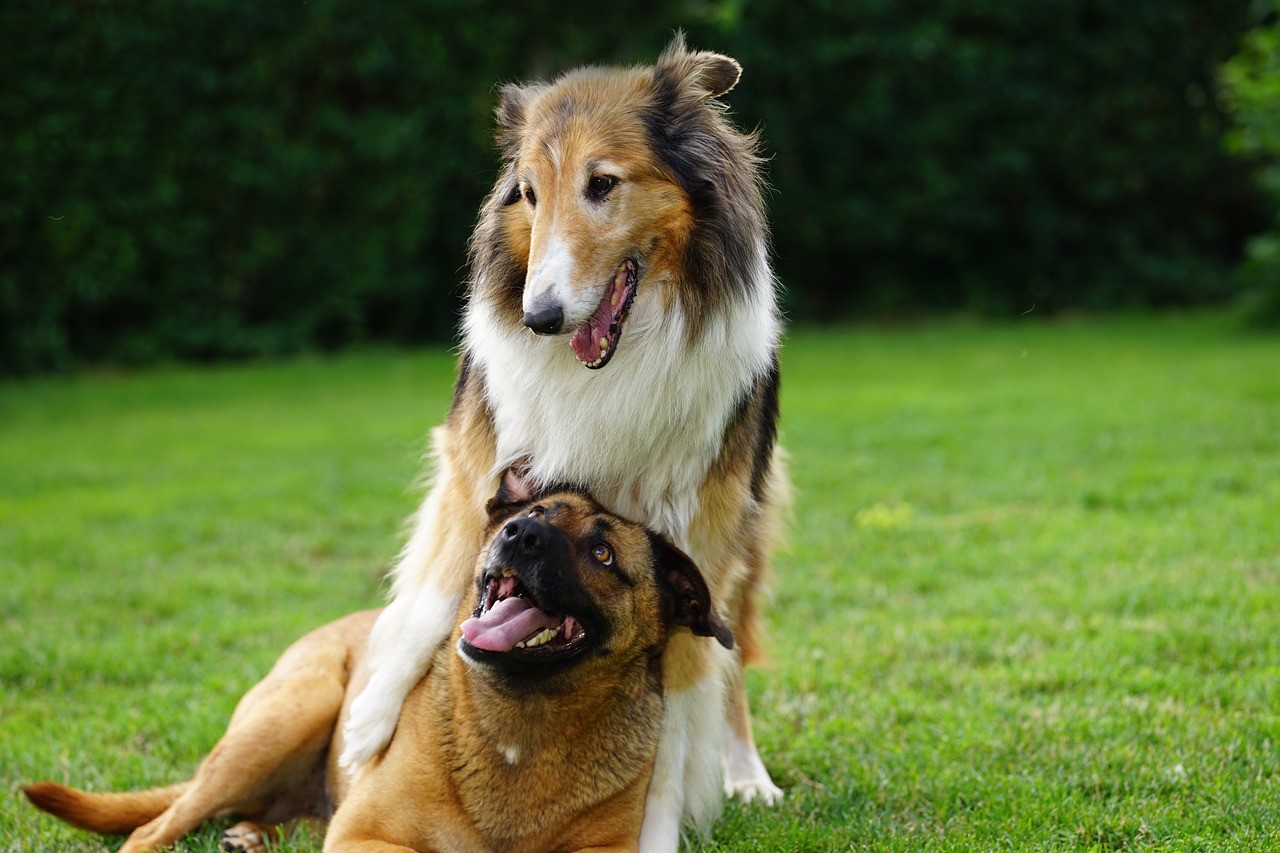
When our dogs play fight with another dog a little too rough, our hearts race, worry starts to creep in, and we have a myriad of questions. One most prominently occuring question is "how do dogs play with each other?" and "what to do if dogs are play fighting?"
Have you ever found yourself pondering whether your dog's play fighting is innocent or concerning? This blog shall provide with you with answers to almost all of your questions regarding play fighting.
Play fighting is a natural behaviour in dogs that they develop at a very early age. In this blog, you will delve deep into the fascinating world of dog play fighting, unveiling everything you need to know to better understand and interpret this seemingly boisterous behaviour. We explore the motivations behind their play, the distinct signs to look out for, and, most importantly, how to ensure the safety and well-being of your dog and the others they interact with.
Play fighting is a natural behaviour deeply rooted in your dog's ancestral instincts and social dynamics. By engaging in playful fighting with one another, dogs learn important lessons that shape their social skills, teaching them how to interact with their fellow canines in a positive and non-threatening manner.
Play fighting allows your dog to practice various body language cues, such as play bows, bared teeth, and gentle nips, which help establish boundaries and maintain harmony during social interactions.
Furthermore, apart from socialisation, play fighting is a form of exercise and mental stimulation for your dog. It provides an outlet for your dog to burn off excess energy and exercises their brain as they constantly assess their opponent's moves, anticipate actions and adjust their strategies accordingly. This helps keep your dog physically fit and mentally engaged.
Yes, it is okay for dogs to fight in play as long as certain conditions are met and the play remains healthy and non-aggressive. Play fighting is a natural and instinctive behaviour for dogs, and it serves several important purposes in their development and well-being. But how do dogs play with each other? Read below to learn more.
It is crucial for you to monitor your dog's play fighting and ensure it remains safe and appropriate. Here are a few guidelines to follow:
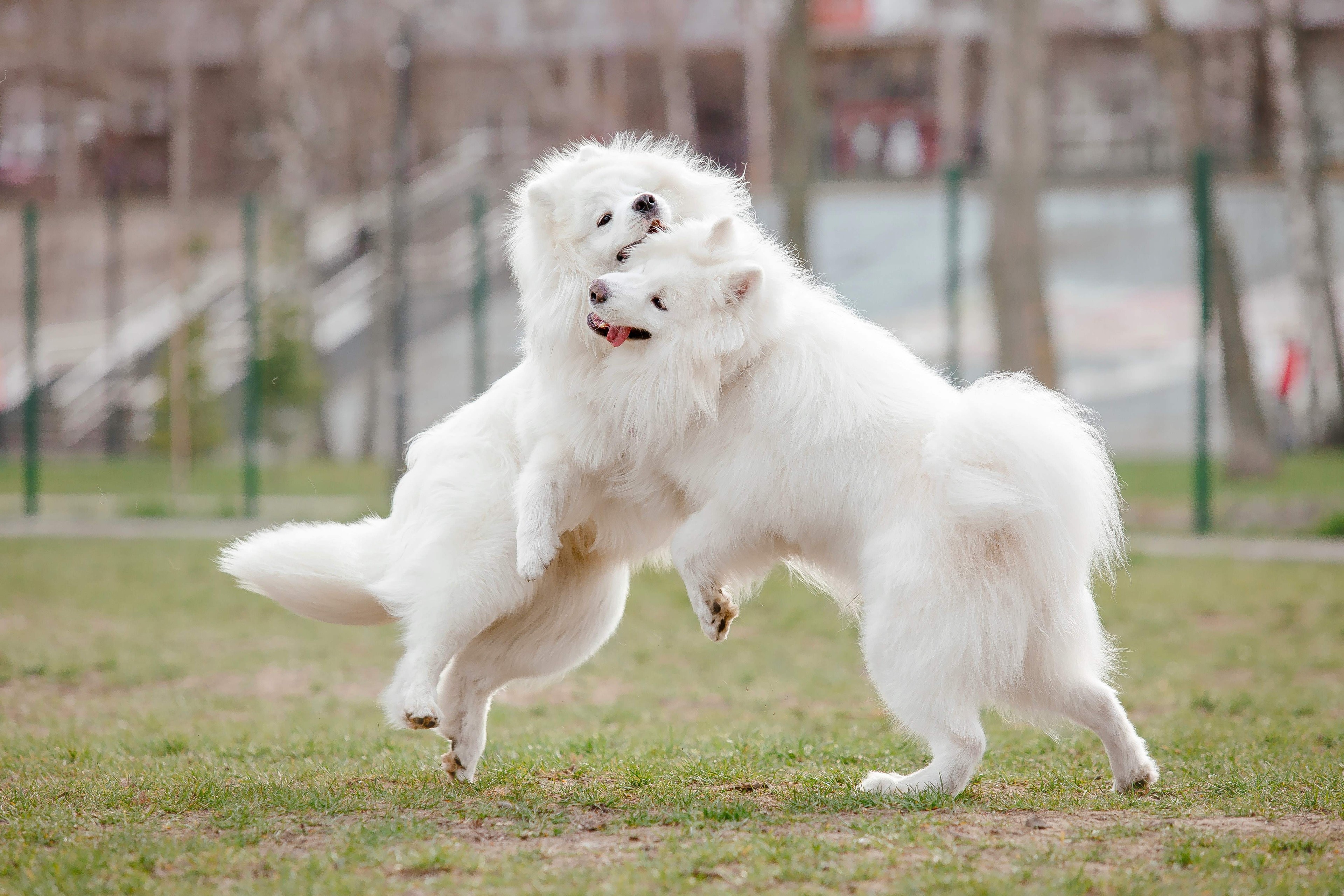
All dogs involved should willingly participate and enjoy the play. Your dog should show relaxed body language, take turns being the "chaser" and the "chasee," and have frequent breaks for self-control.
Play fighting should never escalate into real aggression. If any of the dogs show signs of fear, anxiety, or aggression (such as growling, snarling, snapping, or intense body postures), it's essential to intervene and redirect their behaviour.
It is recommended that dogs engaging in play fighting should be similar in size, age, and energy levels. This helps ensure a balanced and fair play dynamic, reducing the risk of accidental injuries.
You should always supervise your dog's play fighting sessions to ensure they remain safe and appropriate. Be ready to step in if necessary, redirecting both dogs' attention or providing a time-out if the play becomes too intense or one-sided.
Following these guidelines and being attentive to your dogs' behaviour can create a positive and enjoyable play environment, making play fighting a healthy and beneficial activity for both dogs.


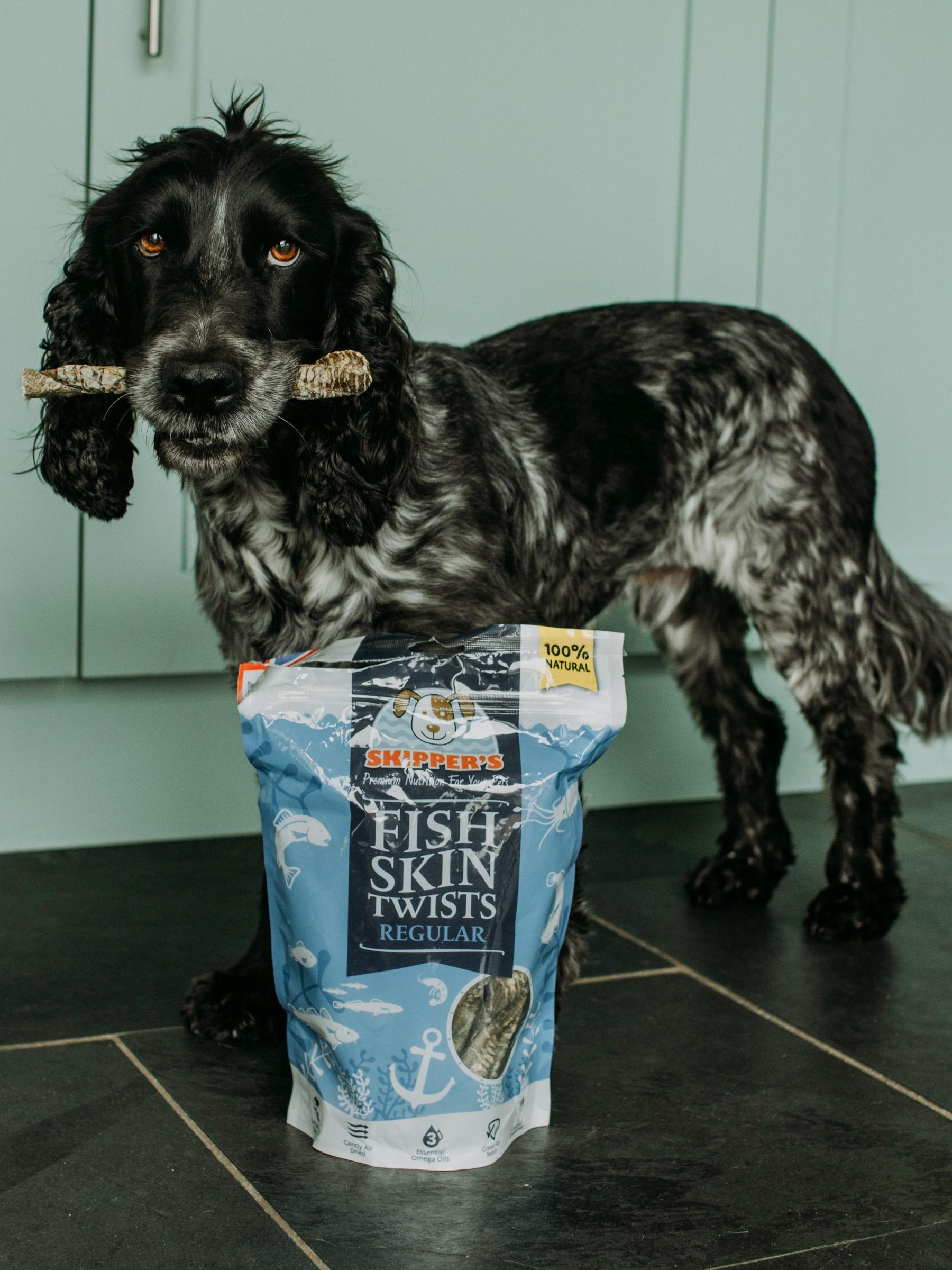
Differentiating between a dog's playing and aggressive behaviour can be done by observing their body language and behaviour closely. Playful dogs exhibit relaxed body postures, wagging tails, and open mouths with relaxed lips. So if you are confused and worried as to how do dogs play with each other, know that:
In contrast, aggressive dogs display locked and loaded body language, where they shift their weight to the back of the legs. Aggressive vocalisations are low and deep, often accompanied by intense staring. Snapping, hard bites, lack of inhibition, and one-sided dominance may indicate aggression. Remember to ensure consensual participation, where both dogs willingly engage and take breaks if needed. If unsure, consult a professional dog trainer or behaviourist for guidance specific to your dog's behaviour.
You may marvel at their lively and spirited interactions when observing your dog play fighting. Dogs possess an innate instinct to play, and play fighting is a prominent expression of their social nature. Understanding your dog's playful behaviours will provide valuable insights into the dynamics of their play and enhance your ability to differentiate between playful behaviour and true aggression.
Here is a list of behaviours your dog may exhibit when play fighting:
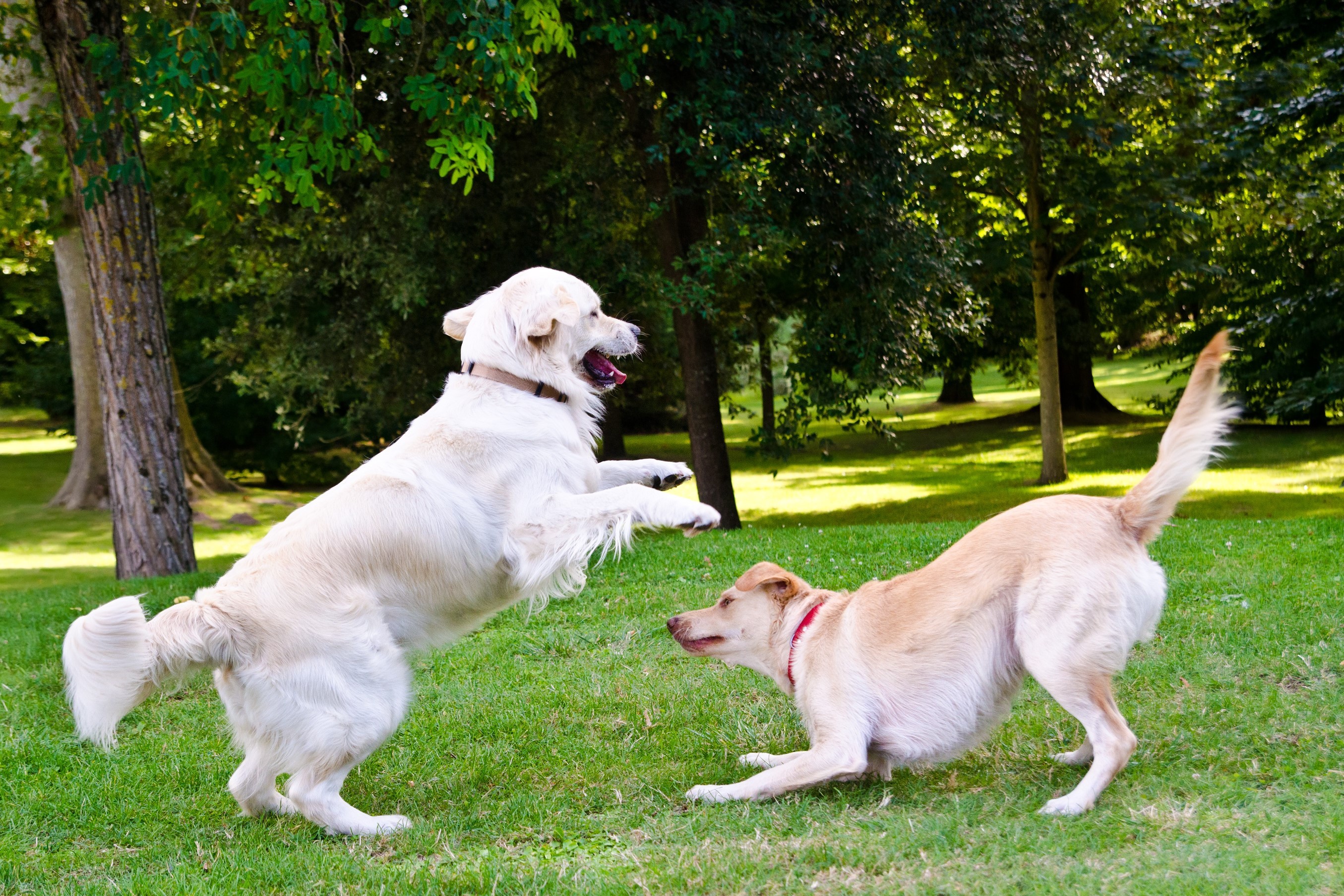
During play fighting, your dog can often display exaggerated and bouncy movements. They may leap, bounce, and engage in energetic running patterns (dog zoomies). These playful movements reflect their excitement and joy, showing that they are engaging in friendly play rather than aggressive behaviour. Exaggerated and energetic movements.
A distinctive behaviour seen during play fighting is the play bow. Dogs will lower their front end, keeping their rear end up in the air. Researchers found dogs play bow to clarify playful intent. It signals to other dogs that the interaction is not aggressive, especially before or after misinterpretable behaviours.
An open-mouthed grin is a common expression dogs exhibit during play fighting. Their mouths are relaxed, tongues may loll out, and they may appear to be smiling. This facial expression reflects their enjoyment and relaxed state, indicating that they are engaging in playful behaviour rather than aggression.
Playful growling during play fighting is often high-pitched, accompanied by wagging tails, and does not show signs of aggression. It can be loud and exaggerated but lacks the low and intense tone associated with real aggression. This vocalisation is a way for dogs to express excitement and enthusiasm during play.
One characteristic of play fighting is that dogs will willingly and eagerly return to the play fight after brief pauses or breaks. They may take turns being the initiator or the recipient of play fighting, showing a desire to continue the interaction. This behaviour demonstrates a consensual and enjoyable play dynamic.
When observing dogs, it's essential to be aware of behaviours that indicate a shift from play fighting to actual aggression. Recognising these signs is crucial for maintaining a safe environment for both dogs and humans.
There are key behaviours that suggest a departure from playful interactions to genuine fighting, and by understanding these signs, you can intervene appropriately and prevent escalation.
Here are behaviours that indicate a dog moving away from playful engagement towards potentially dangerous aggression:
When dogs are transitioning from play fighting to real fighting, their bodies become tense and stiff. They may display a shift of body weight to their back paws and raised hackles, which are the hairs along their back and neck standing on end. These physical signs indicate heightened arousal and potential aggression. The dog's posture becomes more rigid, with little to no relaxation or playfulness.
Unlike the exaggerated and bouncy movements seen during play fighting, dogs exhibiting real fighting behaviour display quick, purposeful, and stiff movements. They lose the playful and lighthearted demeanour, instead showcasing a more focused and intense approach. Their movements lack the fluidity and bounciness associated with play, becoming direct and purpose-driven.
In a real fight scenario, dogs often close their mouths tightly, sometimes curling their lips to expose their teeth. This differs from the open-mouthed expression seen during play fighting. The closed mouth and curled lip can indicate an aggressive stance and a readiness to escalate the conflict. It is a clear warning sign that the dog's intention has shifted from playfulness to potentially aggressive.
During real fighting, dogs may emit a low and deep growl with a grumbling tone. This growl differs from the playful, high-pitched vocalisations heard during play fighting. The grumbling growl indicates a more serious and intense level of aggression. It serves as a vocal warning that the dog is ready to engage in a physical altercation if the situation persists.
In instances of real fighting, one dog may exhibit clear attempts to escape or avoid the other dog. This can be seen through retreat, turning away, or actively trying to distance themselves from the interaction. The dog's body language may reflect fear or discomfort, including signs such as cowering, tail tucking, or seeking shelter. Recognising and addressing this behaviour is essential to prevent further escalation and prioritise the well-being of both dogs involved.
If a play fight between dogs escalates into aggression, it's important for a dog owner to intervene safely. Here are some steps to follow:
Maintain a calm and assertive demeanour to avoid escalating the situation further.
Quickly redirect the dogs' attention away from each other. You can try redirecting their attention by doing one or more of the following:
Making a loud noise: Try making any loud noise you can, whether clapping your hands, banging metal bowls together, or yelling, which can momentarily distract the dogs.
Soaking the dogs in water: Using a hose, bucket, or bottle of water to distract the dogs can help break up the fight or slightly diffuse the situation.
Throwing a blanket or jacket over the dogs: If each dog is unable to see the other, this can stop the fighting and help to calm each dog down.
Toys and treats: A squeaky toy or their favourite toy may help distract the dogs and get them to walk away from the fight. Similarly, using their favourite treat or a high-value rewarding treat can pull them away from the fight. Additionally, using a long-lasting chew can come in handy to help redirect your dog's focus and help calm them down.
If the distraction doesn't work and the aggression continues, it's crucial to safely separate the dogs. Do not attempt to physically separate them using your hands, as you may risk getting bitten. Instead, try using a barrier such as a baby gate or a leash to create distance between them.
Aggressive behaviour in dogs should not be taken lightly. It's important to consult with a professional dog trainer or behaviourist who can assess the situation and provide guidance on addressing the underlying issues causing the aggression and preventing future fights.
Vet thoughts from Emma Chandley BVetMed PGCertSAS MRCVS.
From a veterinary standpoint, play fighting serves a crucial role in canine socialisation and development. These interactions function as a rehearsal for adulthood, allowing pups to hone critical communication skills. Through play fighting, they learn to decipher canine body language, practice bite inhibition, (the ability to control bite force), and establish appropriate boundaries with other dogs. This playful sparring fosters the development of proper canine social etiquette. However, it's important to distinguish between playful and aggressive interactions. Signs like escalating growls, stiff body posture, or persistent whining from one dog may indicate that play is transitioning into a more serious conflict. In such situations, a calm intervention is necessary. Separating the dogs for a brief time-out allows them to de-escalate and return to play once they've calmed down. By understanding these play dynamics, owners can help to ensure their dogs enjoy positive and enriching play experiences.
The duration of playtime for dogs varies based on factors like age, breed, energy level, and preferences. Monitor your dog's play fighting session for signs of fatigue, overstimulation, or stress. End the session if either dog shows excessive panting, disinterest, or discomfort.
Play fighting can be a fun and intense exercise for your dog; therefore, ensure that both dogs have access to fresh water at all times and that you periodically provide them with toilet breaks and rest. Younger and high-energy breeds may need longer, more frequent sessions.
Supervise the play actively, intervening if it becomes too rough or if aggression arises. Maintain a safe environment and ensure a positive experience for both dogs. Strive for balance, allowing for rest and considering each dog's needs.
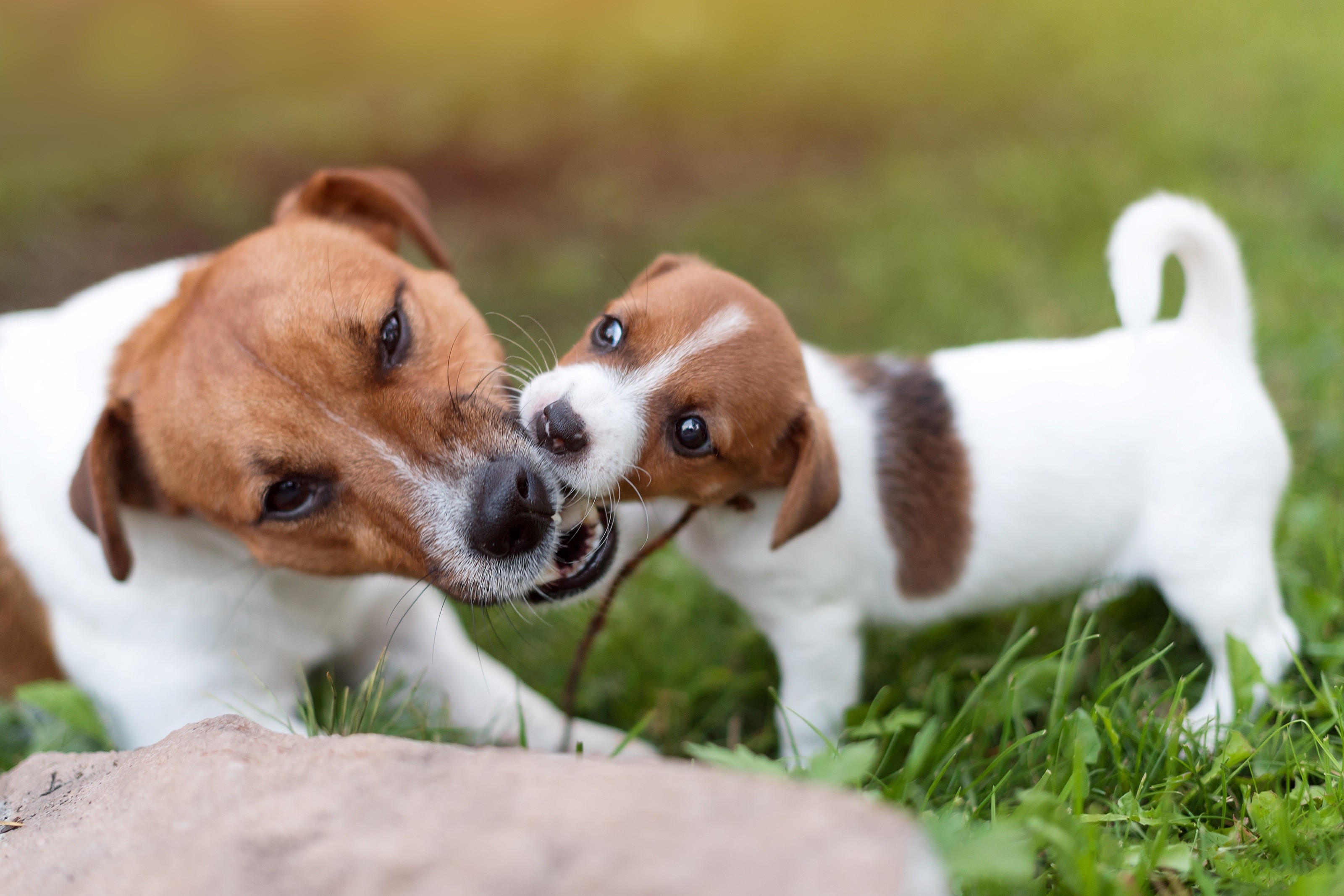
Yes, it is normal for a puppy to engage in play fighting with an older dog. Play fighting is a natural part of a dog's social development and helps them learn important social cues and boundaries.
Moreover, play fighting serves as an energy outlet and fosters physical coordination. However, it's of utmost importance to maintain a friendly, balanced, and safe play environment. This involves considering the size and energy levels of both dogs, and most importantly, actively supervising the play fighting to avert any potential accidents or injuries. Keep a close eye on their body language for signs of relaxation and engagement, and be mindful of the older dog's age and health, allowing them to take breaks if necessary.
Remember to actively supervise the play sessions and intervene if either dog seems overwhelmed or it becomes too rough. If you have concerns or the play shows signs or escalates into real aggression, seek guidance from a professional dog trainer or behaviourist.
Dogs often growl during play fighting as a way to communicate excitement and engage in the interactive nature of play. Play growling is higher-pitched, accompanied by relaxed body language and wagging tails, indicating a playful intent. It serves as a form of social communication, allowing dogs to establish boundaries and negotiate the rules of the game.
Play growling signals a friendly, non-threatening interaction. It can also be a learned behaviour, as dogs realise that growling elicits positive responses and encourages continued play. Whilst play growling is normal and harmless, monitoring the play fighting is crucial to ensure it remains appropriate and doesn't escalate into aggression. If you have concerns or the growling becomes intense, seek guidance from a professional dog trainer or behaviourist.
Curious if dogs can eat apples? Discover how to safely feed your...
by Crystal Moore on June 28, 2024
Panting allows your dog to regulate their body temperature and...
by Crystal Moore on April 06, 2023
Explore the intriguing world of why dogs eat grass. From instinctual behaviour...
by Crystal Moore on May 17, 2024
Discover why dogs hide their treats and learn effective methods to...
by Crystal Moore on May 29, 2024

